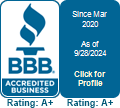
8 Telltale Signs Your Credit Card Debt Has Entered the Danger Zone
Credit cards offer flexibility, rewards, and a safety net for emergencies, but they also come with the risk of debt piling up faster than expected. With the average American carrying over $5,700 in credit card debt, it is crucial to recognize when your debt shifts from manageable to out of control.
If left unchecked, credit card debt can lead to financial hardship. Early detection of the warning signs can help you regain control before it is too late. Here is what to watch out for:
1. You Are Stuck in the Minimum Payment Trap
Regularly paying only the minimum amount due indicates that you are grappling with your debt. While this approach might help you stay on time with payments, it allows interest to accumulate and keeps you in debt for years.
For example, making the minimum payment (the interest plus 1% of the total) on a $5,000 balance with an 18% APR could take you nearly 23 years to pay off. That is about $125 per month, with interest costing you more than $6,900 over the years. If you cannot pay more than the minimum each month, it is a sign that your debt is becoming unmanageable.
2. You Are Maxing Out Your Credit Limits
Maxing out your credit cards indicates that you are living beyond your means, which is a red flag for financial trouble. Besides leaving you with no safety net for emergencies, maxed-out credit cards have higher interest rates and over-limit penalties.
A high credit utilization rate—calculated by dividing your outstanding balance by your total credit limit—can hurt your credit score. Keeping your utilization low is crucial to maintaining a healthy financial profile.
3. You Rely on Credit for Basic Necessities
Using credit cards to pay for basic expenses like groceries, rent, or utility bills is a warning sign of cash flow problems. While credit card rewards programs can be tempting, relying on credit to cover everyday needs and not paying off your balance in full each month can trap you in a debt cycle.
4. You Are Managing Debt with Multiple Credit Cards
If you are spreading out purchases across multiple credit cards to avoid maxing them out or reaching your limit, you might feel in control—but this is an illusion. Managing several cards leads to confusion, missed payments, and growing interest charges. Over time, this tactic deepens your debt rather than solving the problem.
5. You Are Taking Out Cash Advances
Relying on credit card cash advances to pay bills or cover other debts is another clear sign of financial distress. Cash advances come with higher interest rates and start accruing interest immediately. It increases your debt load faster than regular credit card purchases.
6. You Are Afraid to Check Your Statements
Do you dread opening your credit card statements or checking your balance online? Avoiding your financial reality because it feels overwhelming is a serious red flag. Ignoring your spending patterns, balances, and deadlines can result in missed payments, late fees, and higher interest rates—pushing you further into debt.
7. You Are Borrowing to Pay Off Credit Cards
Borrowing money from friends or family or using one credit card to pay off another is a clear sign your debt is spiraling out of control. This approach is like digging one hole to fill in another, and the hole only gets deeper. This temporary fix does not address the root of the problem and makes it even harder to escape the debt cycle.
8. Your Debt-to-Income Ratio Is Above 40%
The amount you owe each month compared to your income is called your debt-to-income (DTI) ratio. A DTI ratio above 40% means a significant portion of your monthly income is going toward paying off debt, making it harder to qualify for loans or mortgages. It is a strong indicator that your debt is growing faster than your ability to pay it off, increasing your risk of financial distress.
Regain Control Over Your Debt
The first step toward financial freedom is recognizing the signs that your credit card debt is out of control. The good news? You don’t have to face it alone. Whether through debt consolidation, credit counseling, or other debt-relief options, there are ways to regain control of your financial future.
Don’t let your debt grow any further—get help now. Contact us today to explore your debt relief options and take the first step toward becoming debt-free.


